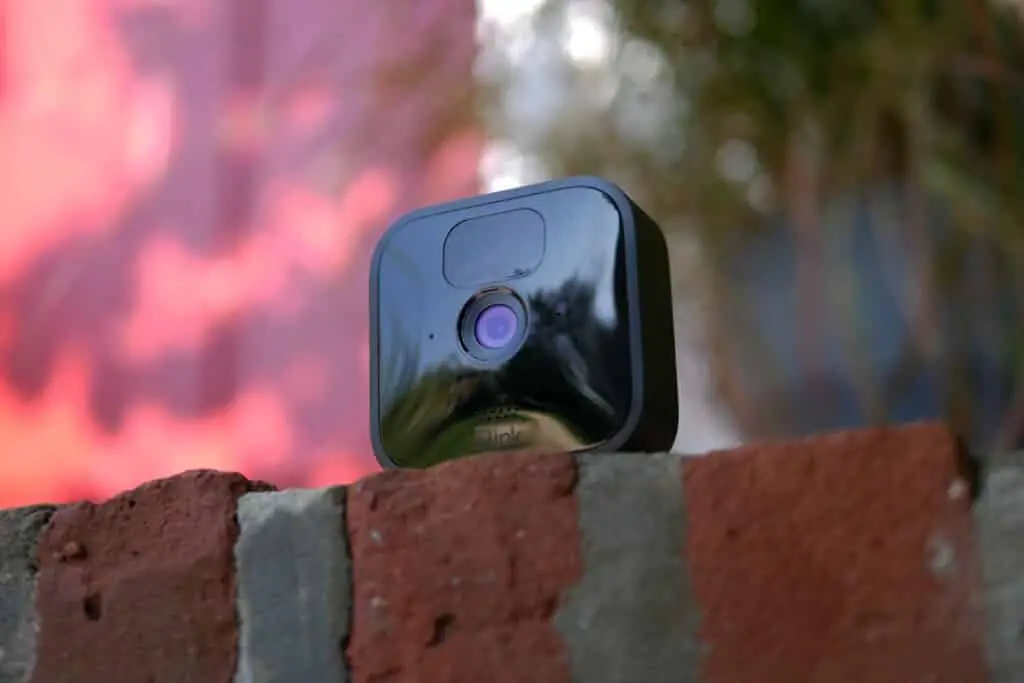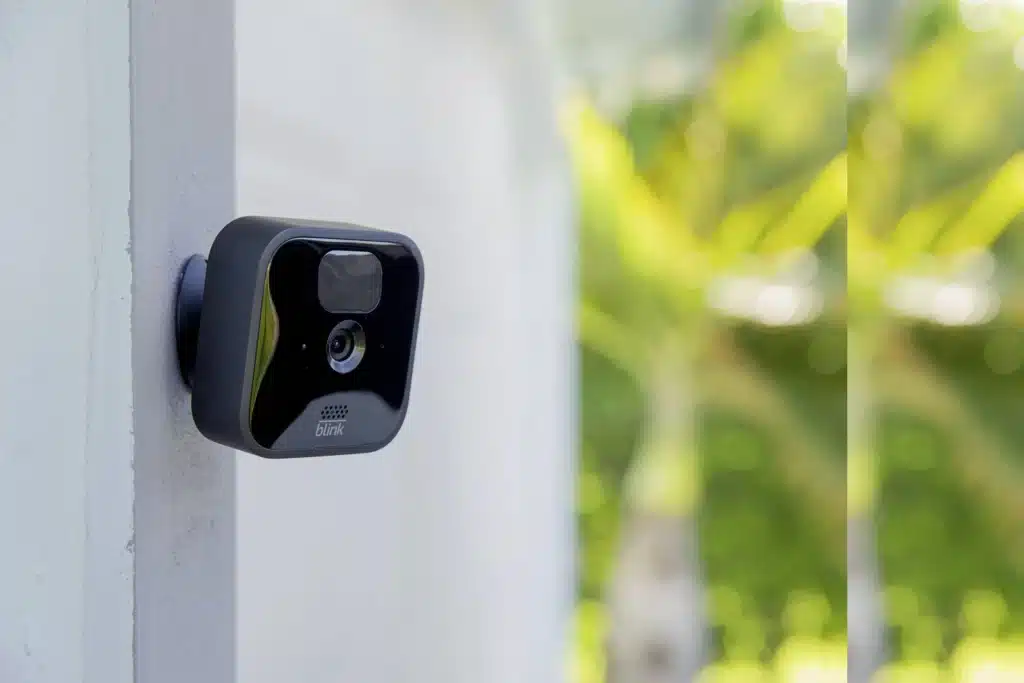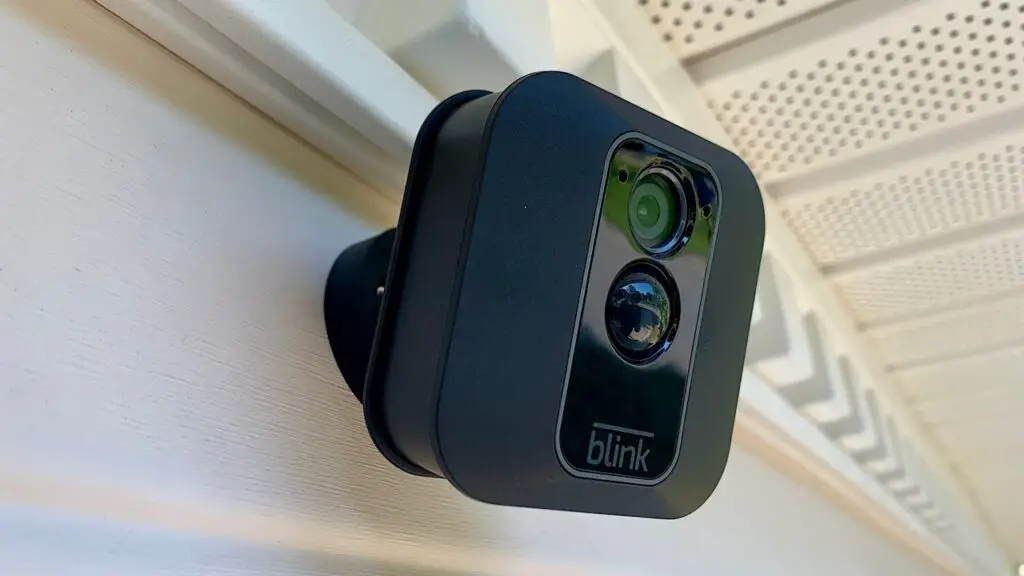Introduction
What Size Battery For Blink Outdoor Camera: The Blink Outdoor Camera has become popular as a cheap and flexible way to protect your house. It is an easy way to keep an eye on the outside of your home because it is wireless and easy to set up. When using the Blink Outdoor Camera, it’s important to think about how long the battery will last and what size battery will work best.
The Blink Outdoor Camera is designed to work well and keep watching without stopping. We will talk about the different things that affect battery life, such as how often you record, the weather, and the size of the battery. Also, we’ll show you how to get the most out of your batteries and talk about other ways to power your camera if you want to use it for longer.
Whether you are setting up a Blink Outdoor Camera for the first time or looking to optimize the battery usage of your existing device, this guide will equip you with the knowledge needed to choose the right battery size and enhance your overall experience with this popular security camera. Let’s dive in and explore the world of Blink Outdoor Camera batteries.

What batteries come with Blink Outdoor camera?
Blink Indoor and Outdoor Cameras
You’ll find 2 AA batteries inside. Pop out the old batteries and insert the new ones.
The Blink Outdoor camera comes with the batteries you need to use it right away. Most of the time, two AA lithium batteries come with each Blink Outdoor camera. They were picked because they can handle all sorts of weather and have power that lasts a long time. This makes sure that they work well for a long time.
For a number of reasons, lithium batteries are better than standard alkaline batteries. First, lithium batteries have a higher energy efficiency, which means they can give off more power for longer. This means you won’t have to change the batteries as often, which will save you money and time. Also, lithium batteries are known to work well in both hot and cold temperatures, so you can use them outside in either environment.
The battery life of the Blink Outdoor camera varies on a number of things, such as how often it records, how many times it detects motion, and how good the wireless signal is. If you use the Blink Outdoor camera like most people do, the batteries can last up to two years. This estimate can change, though, based on how you use your phone.
There are a few best practices you can use with your Blink Outdoor camera to make it last longer. Adjusting the camera’s motion recognition settings to a less sensitive level or narrowing the camera’s field of view can help cut down on unnecessary recordings and save battery power.
Can I use regular AA batteries in Blink outdoor camera?
Yes, you can use regular AA batteries in Blink cameras. However, it is recommended to use lithium AA batteries for better performance and longer battery life. Regular alkaline AA batteries may not last as long and may not perform as well in extreme temperatures.
The Blink Outdoor camera is designed to work optimally with lithium AA batteries. These batteries offer higher energy density, longer-lasting power, and better performance in extreme temperatures compared to regular alkaline batteries. However, in certain situations, it may be necessary to use regular AA batteries as a temporary or backup solution.
Power the Blink Outdoor camera using AA batteries. The camera may utilize alkaline or rechargeable AA batteries in its battery compartment. Regular AA batteries may work, but gadget performance and battery life may decrease.
Regular alkaline AA batteries generally have a lower capacity and voltage compared to lithium batteries. As a result, they may not provide the same level of power and longevity as lithium batteries. The Blink Outdoor camera may experience reduced battery life and potential performance issues when using alkaline batteries. This means you may need to replace the batteries more frequently, leading to increased maintenance and costs over time.
Also, alkaline batteries are more likely to have their power drop as they run down. This can make it hard for the camera to get the power it needs, which could affect how well it works and how reliable it is. Lithium batteries, on the other hand, keep a more stable charge throughout their life, so they always work the same way.
Can you recharge Blink outdoor camera batteries?
The Lithium batteries that are included with the Blink system are NOT rechargeable. If the camera is plugged in while the batteries are in the camera – the batteries will not recharge. Also keep in mind, there will be some drain on your batteries even when your device is powered by a USB cable.
Battery Removal: To recharge the Blink Outdoor camera batteries, you must first remove them from the camera. Open the battery compartment on the back of the camera by sliding the latch or pressing the release button.
Battery Replacement: Replace the drained batteries with new or fully charged AA lithium batteries. Ensure the batteries are inserted correctly, following the polarity markings (+/-) inside the battery compartment.
Battery Recharging Options: Unfortunately, Blink Outdoor camera batteries are not rechargeable in the traditional sense. However, there are alternative solutions available to ensure continuous power supply:
Replaceable Batteries: Purchase additional sets of AA lithium batteries to swap out the drained ones. Keep spare batteries on hand to minimize downtime during the recharge process.
Rechargeable Batteries with External Charger: Think about using AA lithium batteries that can be recharged and a separate charger. With this choice, you can charge one set of batteries while you use the other set. Make sure to use replaceable batteries that are good quality and work with the camera.
Battery Packs and Solar Panels: Blink offers separate accessories, such as battery packs and solar panels, for select camera models. These accessories provide a convenient and eco-friendly solution by extending the camera’s battery life or harnessing solar energy for recharging.
Can you use Blink without batteries?
Yes, the Blink Video Doorbell can be wired or wire-free. When wired, the Blink Video Doorbell is able to extend battery life and rings your existing chime. Even when wired, the doorbell is always powered by size AA, 1.5 volt, Lithium non-rechargeable batteries.
AC Power Adapter: Blink offers an AC power adapter as an optional accessory, which enables you to power the cameras directly from an electrical outlet. By connecting the adapter to the camera’s micro-USB port, you can eliminate the need for batteries altogether.
Continuous Power Supply: Utilizing the AC power adapter ensures a constant power supply to the Blink cameras, eliminating the need for battery replacements or recharging. This option is particularly useful for locations where an electrical outlet is easily accessible.
Power Adapter Compatibility: Ensure that the AC power adapter you choose is compatible with your specific Blink camera model. Consult the manufacturer’s website or user manual for information on compatible adapters.
Setup Process: Follow the manufacturer’s instructions for connecting the AC power adapter to your Blink camera. Typically, this involves plugging the adapter into an electrical outlet and connecting the micro-USB end to the camera’s corresponding port.
Testing and Verification: Once the power adapter is connected, verify that the Blink camera powers on and functions correctly. Monitor the camera’s performance to ensure it captures and records video as expected.

How long do batteries last in Blink outdoor camera?
two years
On average, a Blink camera battery can last up to two years with normal use. However, this estimate can vary depending on how often the camera is used and how many motion events it records. If the camera is used frequently, the battery life may be shorter.
Manufacturer’s Estimate: Blink Outdoor cameras are designed to have a long battery life. The manufacturer states that under normal usage conditions, the batteries can last up to two years.
Variances in Battery Life: It’s important to note that actual battery life can vary based on several factors, including camera activity, environmental conditions, motion detection frequency, and the use of additional features like Live View or Two-Way Audio.
Camera Activity Level: The Blink Outdoor camera uses more power when activated by motion or manually. High-traffic or continuous-monitoring cameras may drain batteries faster.
Motion Detection Sensitivity: Higher sensitivity settings can lead to more frequent motion detection events, resulting in increased battery consumption. Adjusting the sensitivity to an optimal level for your specific needs can help extend battery life.
Weather Conditions: Extreme temperatures, both hot and cold, can impact battery performance. In colder temperatures, batteries may drain faster, while excessive heat can reduce overall battery life.
Live View and Two-Way Audio: Utilizing the Live View feature or engaging in two-way audio communication with the Blink Outdoor camera can significantly reduce battery life. To use these features sparingly or when necessary to conserve battery power.
Is Blink Outdoor camera waterproof?
Are Blink cameras waterproof? Only one Blink camera is water-resistant: the Blink Outdoor, which has an IP65 weather rating. Blink’s indoor cameras are not waterproof, and we don’t recommend leaving them out in a rainstorm or dropping them in a bathtub.
Waterproof Rating: Blink Outdoor Cameras can survive rain, snow, and harsh temperatures. Its IP65 rating protects it from dust and low-pressure water jets from any direction. This grade assures the camera can operate outdoors without water or dust damage.
Water Resistance: The IP65 rating of the Blink Outdoor Camera indicates a high level of water resistance. It can withstand rain showers, heavy downpours, and even splashing water without compromising its functionality. However, it is essential to note that the camera is not submersible, so it should not be fully immersed in water.
Operating Temperature: In addition to water resistance, the Blink Outdoor Camera can also endure a wide range of temperatures. It is designed to operate in temperatures ranging from -4°F (-20°C) to 113°F (45°C). This makes it suitable for use in various climates, whether it’s hot summers or freezing winters.
Installation Considerations: When installing the Blink Outdoor Camera, it is crucial to position it in a way that minimizes direct exposure to heavy rainfall or snowfall. Placing the camera under the eaves of a building or using a weatherproof housing can provide additional protection against harsh weather conditions.
How many batteries do Blink cameras need?
2 AA lithium batteries
Install or replace batteries
Add or replace the 2 AA lithium batteries into their slots, matching up the + and – that’s labeled on the camera with the + and – labeled on the batteries.
Camera Activity: The more frequently the camera is triggered by motion detection or used for live-view, the quicker the batteries will drain. It is important to find a balance between camera activity and battery life to maximize the longevity of the batteries.
Temperature: Extreme temperatures, both hot and cold, can impact battery performance. To maximize battery life, put cameras away from direct sunlight and cold conditions.
Signal Strength: Weak Wi-Fi signal can cause the camera to work harder to maintain a connection, leading to increased battery usage. Ensuring a strong and stable Wi-Fi connection can help preserve battery life.
Battery Replacement and Monitoring: Blink cameras are equipped with a battery level indicator within the Blink mobile app. This allows users to monitor the remaining battery life and receive notifications when the batteries need replacement. When the battery level becomes low, to replace all batteries simultaneously for optimal performance.
Blink cameras require either two or four AA lithium batteries, depending on the specific camera model. These cameras are designed to be energy-efficient and can operate for up to two years on a single set of batteries. Factors such as camera activity, temperature, and signal strength can affect battery life, so it is important to consider these factors when installing and using Blink cameras.
Why are my Blink batteries dying so fast?
If you’ve received a notification saying that one or more of your cameras have high usage, this means that you won’t get the expected 2 year battery life that Blink cameras offer. High usage means that the amount of motion clips recorded and Live View used is causing the batteries to deplete quicker than expected.
Camera Activity and Settings
Camera action is a major battery drainer. Motion detection and live-view suck up battery power on Blink cameras. Adjust the camera’s sensitivity or region to save battery life. Reducing live-view usage can also save battery power.
Weak Wi-Fi Signal
Blink cameras require more battery when the Wi-Fi signal is weak. If your camera is far from your Wi-Fi router or has several obstructions between them, it may have trouble connecting. To fix this, move the camera closer to the router or use a Wi-Fi extension.
Extreme Temperatures
Hot and cold temperatures impact battery performance. High temperatures accelerate battery drain, whereas low temperatures diminish efficiency. Try moving your Blink cameras out of direct sunshine and frigid weather. Optimizing battery life.
Battery Type and Quality
Using the correct type of batteries is crucial for optimal performance and longer battery life. Blink cameras require AA lithium batteries. Avoid using alkaline batteries as they may have shorter lifespans and provide insufficient power. Ensure that you are using high-quality lithium batteries from reputable brands to maximize battery performance and longevity.

Conclusion
Blink Outdoor Camera is essential to ensure reliable performance and extended usage. Throughout this article, we have explored the factors that impact battery life, such as recording frequency and environmental conditions, as well as the different battery options available for the Blink Outdoor Camera. You can maximize the lifespan of your camera’s batteries.
Lithium AA batteries outperform alkaline ones in harsh temperatures and last longer. By choosing the optimal battery size and saving power, you can maximize your Blink Outdoor Camera’s effectiveness and property security.
Adjusting motion detection settings, lowering video clip length, and employing scheduling functions will dramatically prolong Blink Outdoor Camera battery life. Solar panels and connected connections can extend camera battery life. These power sources eliminate battery changes.

